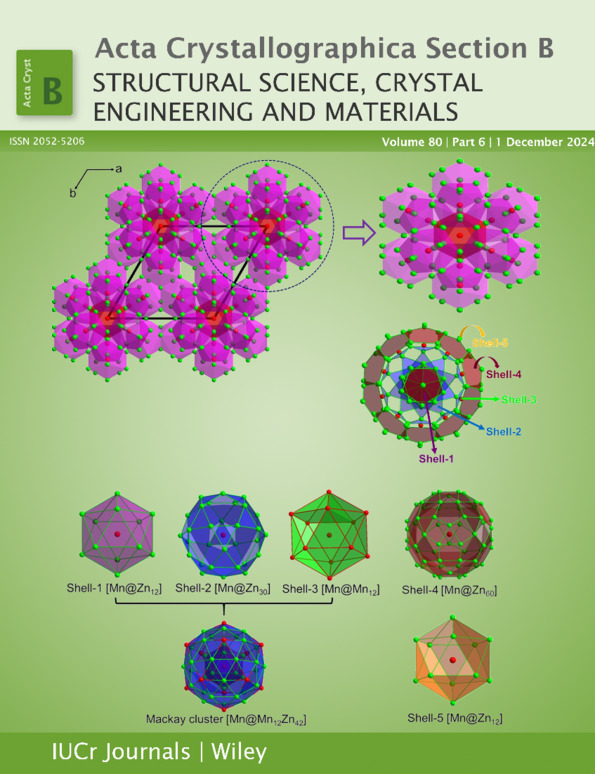Coordination geometry flexibility driving supramolecular isomerism of Cu/Mo pillared-layer hybrid networks
Abstract
Hydrothermal synthesis led to four novel 3D pillared-layer metal–organic frameworks: [Cu4(4,4′-bipy)4(MoO4)4·0.3H2O]n (1), [Cu(4,4′-bipy)0.5(MoO4)·0.25H2O]n (2), [Cu(4,4′-bipy)(MoO4)·0.1H2O]n (3), and [{Cu(4,4′-bipy)}2(Mo8O26)0.5]n (4). These compounds exhibit diverse supramolecular isomerism within their 3D coordination networks, each incorporating bimetallic {CuMoO} layers linked by 4,4′-bipyridine, demonstrating a remarkable structural diversity. Compound 1 features a 3D network derived from conformational supramolecular isomerism. Its bimetallic layer comprises fused 16-membered {Cu4Mo4O8} and eight-membered {Cu2Mo2O4} rings, with varying O—Cu—O bond angles affecting the network puckering and Cu–Cu distances. In contrast, the coordination networks observed in 2, 3, and 4 correspond to structural supramolecular isomers from the earlier stated networks. In 2, centrosymmetric Cu2+ dimers with distorted square-pyramidal geometry are linked along the c axis by 4,4′-bipyridine, forming 1D {Cu2(4,4′-bipy)}n chains with a Cu–Cu distance of 2.95 Å. Its oxide substructure comprises bilayers of fused 12-membered {Cu3Mo3O6} rings. Crystal structures 3 and 4 are particularly notable for their construction at the Cu+ centers. In compound 4, this isomerism is further influenced by the interplay between the distortion of the coordination geometry of both the Cu and Mo ions. The propensity to form these supramolecular isomers primarily stems from the flexible coordination environment of copper ions. Electron paramagnetic resonance measurements corroborated the structural descriptions of the paramagnetic compounds 1 and 2.




